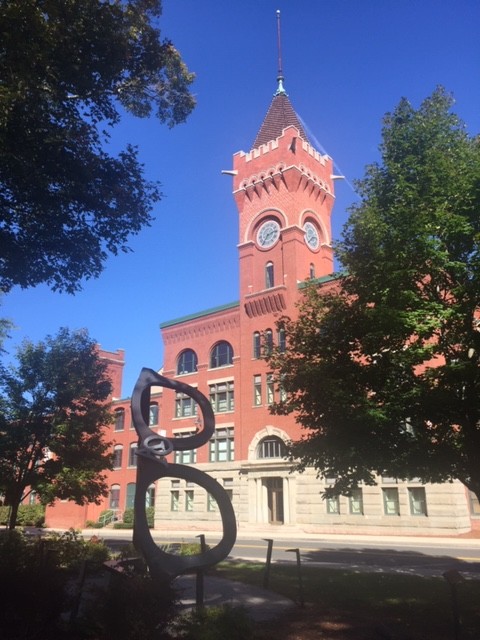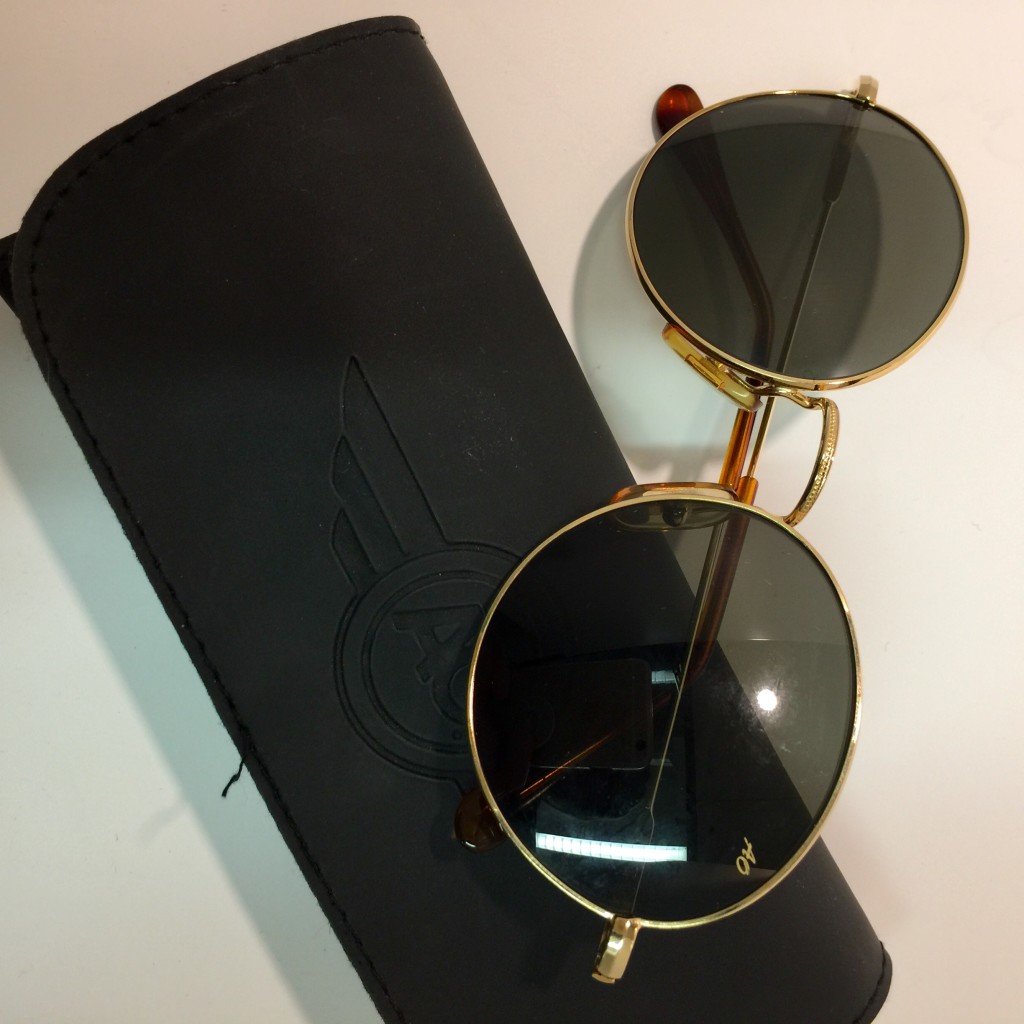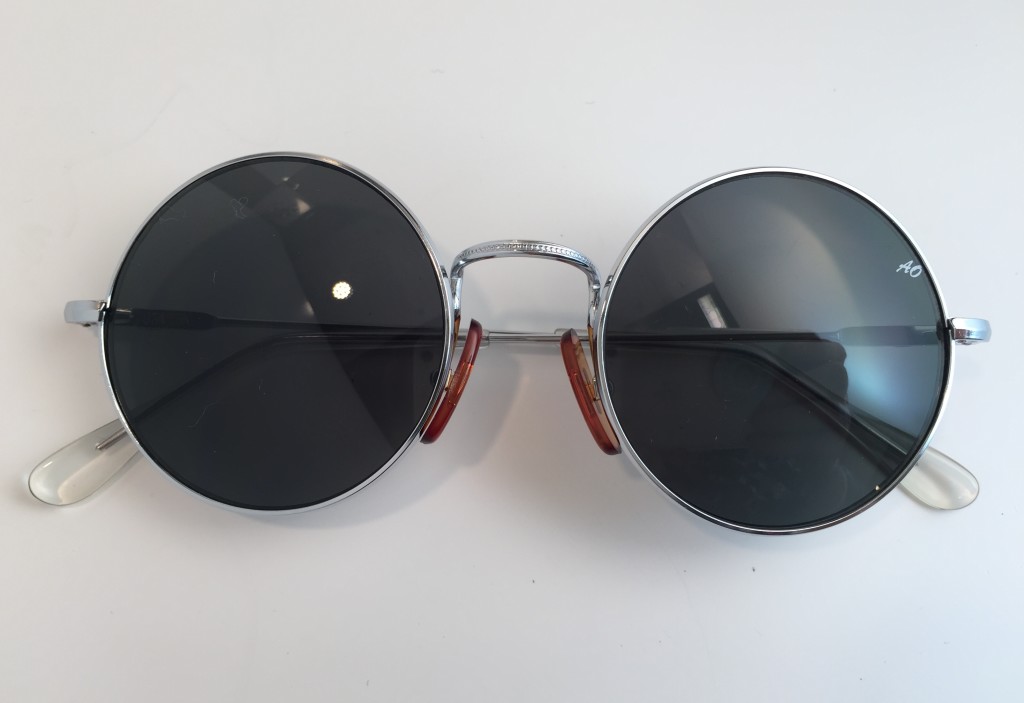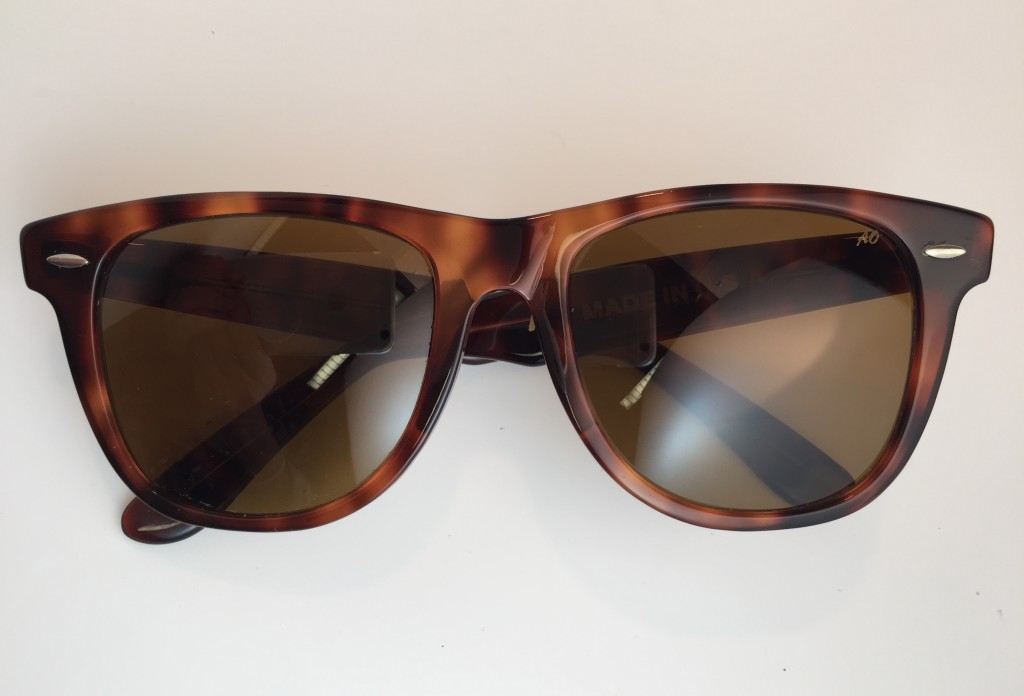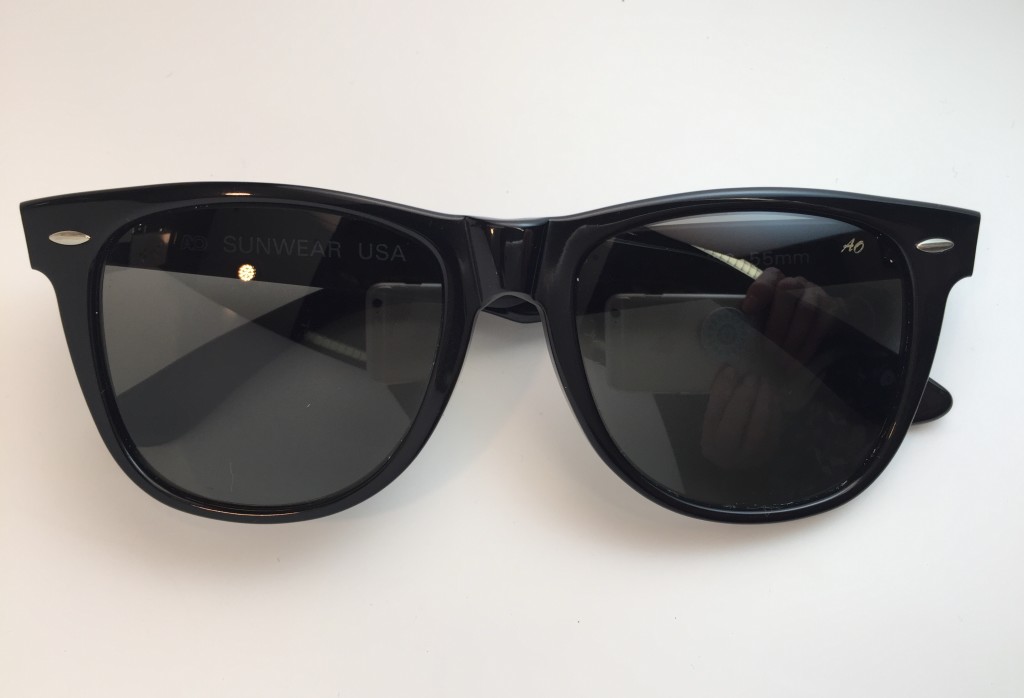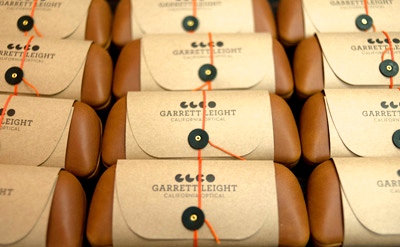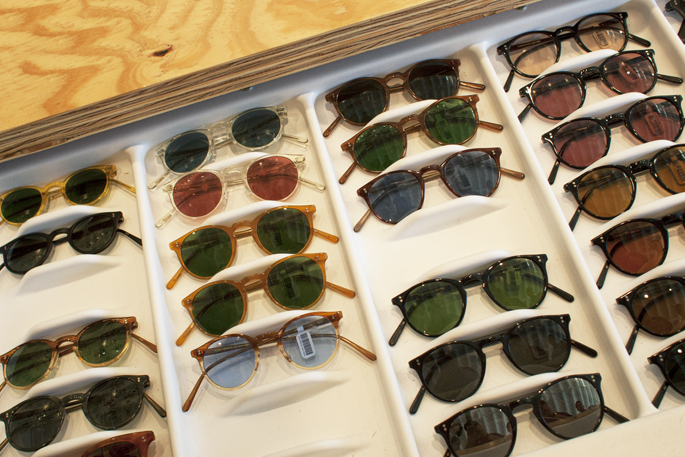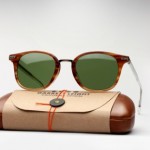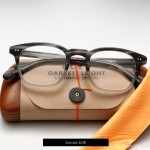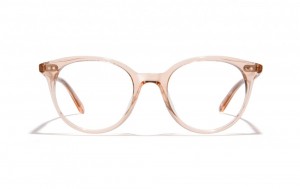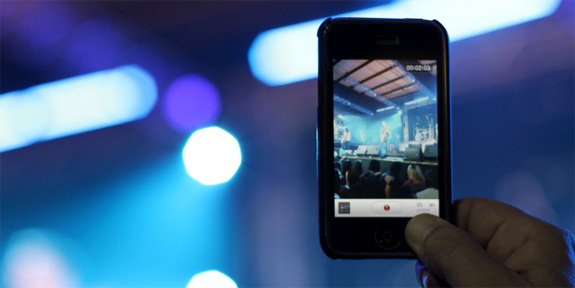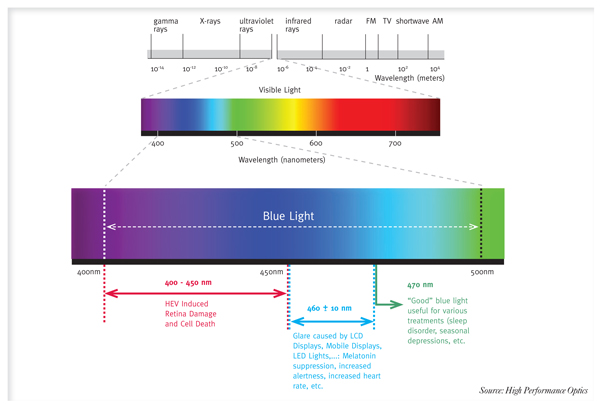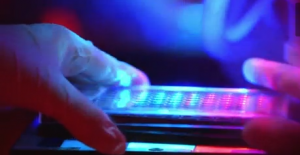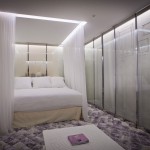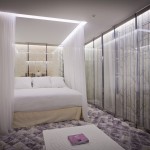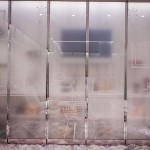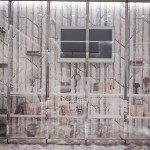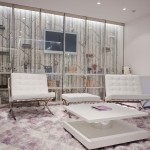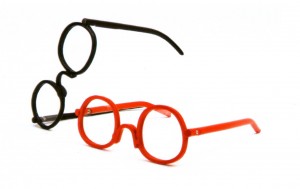
Our models, Simon and Caroline, in front of the fantasy forest library backdrop. Simon is wearing Lee Allen Eyewear glasses and Caroline is wearing Augusto Valentini.
Everyone loves the excitement of fall – the start of the football season, the launch of the new theater year and, of course, the release of the newest fashions. In the midst of this swirl of new beginnings, we traveled to Paris to attend the annual Silmo exhibition, where the latest eyewear fashions are unveiled. While we were there, we decided to take advantage of the locale to do a photo shoot to capture the excitement of travel and designer elegance into our photo spreads.
The venue was the exquisite Hotel Seven, ideally located in the city’s 5th arrondissement, next to the Latin Quarter and a short walk from the renowned rue Mouffetard, one of the oldest streets in Paris which is known for its shops and many lively restaurants. This hotel features fantasy rooms created by high-end designers. Paul-Bertrand Mathieu designed the ON/OFF Suite that we used for the photo shoot. He loves working with lights to create shifting and subtly surrealistic worlds. For the Seven, he created – two worlds in which emotion and technology get together perfectly.
The “On/Off Suite”. Using transparent screens and special lighting, Mathieu created an illusion that lets you move from an elegant and somber library setting complete with books and desk, to a fantasy forest that features hidden “wonder objects.”
« My initial idea was to create a modern illusion. A fleeting moment when all of a sudden, everything moves, changes, nothing is like it was a moment ago. I had to make two decors in one. On the front side, an elegant and sober decor with books, a boudoir-bedroom, a desk… And on the other side, a fantasy world with an imaginary forest, wonder objects. When you switch the lights on or off, the glass on the walls becomes opaque or transparent : a second decor is then hiding or appearing. Proverbs and citations about illusions are also hidden everywhere. »
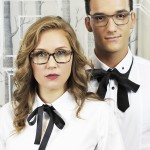
Caroline, in Seraphin, and Simon, in Augusto Valentini, wander in the fantasy forest.
We dressed up our models – acclaimed theater actor and actress Simon Oldani and Caroline Frossard – in “night on the town attire” and gave them glasses in sophisticated, innovative styles that are equally perfect for the office or an evening out.
Simon Oldani was born in Geneva, Switzerland. After a childhood spent in Evian (France), he began acting in community centers and at the Geneva Theater High School. From 2010 to 2013, he played in «Le Gros, la Vache et le Mainate». The play has been a national success and got recognition by art critics. He also loves modelling, he made a lookbook for the Fittz brand in Netherlands, then for a european campaign for a french Gin Brand «Gin Vine». He made some parutions in Vanity Faire, Vogue and Esquire which will give him the strenght to carry on this way, mixing acting and modelling.
At the end of two hectic, but fun-filled days, we came away with a collection of photos we really love. It was an experience we’ll never forget. After all, who doesn’t love Paris in the fall?
Photography by Greg Alexander Art Director: Sébastien Vienne Models: Simon Oldani & Caroline Frossard Hair & Make-up by François Laly Special thanks to Hôtel Seven Paris

